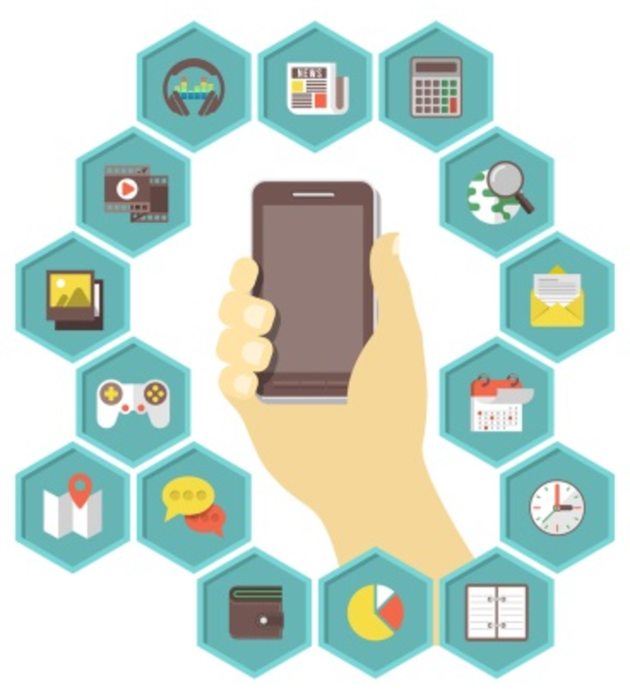Jordan Stolper, CEO of StoryDesk, notes that, “The greatest misconception of app development is that once the software is built, the development ends.” In fact, the opposite is true. Like it or not, mobile software is an ongoing service, not a one-and-done product.” And Roy Chomko, CEO of Adage Technologies, says that, “While executives eagerly shell out thousands of dollars for an app’s development and launch, too often they fail to forecast the ongoing costs of maintaining a mobile application.” If this is true, what additional effort, time, and expense should B2B marketers anticipate?
There are three areas of time and resource investment that every B2B sales and marketing app requires:
1. Development of the app
2. Deployment of the app to everyone who needs it
3. Maintenance and updating of the app
Examining each area will reveal not only the source of frustration for B2B app benefactors, but also a roadmap for success.
Development: A myth popular among many marketers is that developing mobile apps is cheap. Jeff Francis, co-founder and COO of Copper Mobile, reports that sales applications typically fall into the $50,000 to $150,000 development cost range, and can far exceed those costs if the app is highly complex with more than three mobility platforms. One study by Dr. Tim King, CTO of 5app, shows the cost of an app increasing by a factor of between 2.5 and three times when built for three supported platforms, as compared to just one.
Deployment: Simply putting an app into a store doesn’t actually deploy it to the devices of the intended users, thereby burdening developers to ensure that all required devices are supported. In the world of sales and marketing, it’s not enough to limit support only to the variety of tablets and smartphones, because many sales personnel use PCs.
Maintenance: In many ways a B2B mobile app is similar to an automobile. Once the product has been paid for, you must “feed” and maintain it—gas, oil changes, brakes, etc. Depending on development, it will require updates whenever operating systems are updated or released, new device types and sizes become available, and even when new versions of Web browsers are released. In 2013 alone, iOS and Android operating systems had dozens of upgrades and bug fixes, requiring apps to be modified just to keep them working.
Experience shows maintenance costs far outweigh the initial cost of building the app. Forrester Research has documented that the 2-year maintenance cost of a B2B app is 2.5 times the initial development cost. Estimates by MGI Research show apps will require at least four major updates stemming from operating system and device updates over an 18- to 24-month period for just one operating system platform (e.g. iOS.)
Here are a few things to keep in mind during the app development process:
Finding a cost-effective solution: Achieving all of the benefits of having a B2B app deployed to marketing, sales, channels, and customers, while at the same time being able to afford the development, distribution and maintenance costs, can be a challenge. For example, Kaon developed its own “Application Delivery Network” to help reduce the costs associating with distributing and maintaining mobile apps.
True interactivity: The vast majority of B2B sales and marketing apps are tablet-based versions of slide presentations, videos, and brochures. These are not going to be more effective simply because they are used on a touchscreen device. Consider the user experience: engagement with the end user on a sensory level; creating an emotional connection; and providing useful, relevant information.
“Mobile first” does not mean “mobile only:” Consider that your app needs to be delivered not just to tablets and smartphones, but also as standalone applications to PCs (laptops/desktops, Windows, Macs, Linux and Chromebooks) and as a browser app running on the Web.
Online and offline: Sales and marketing teams often encounter customer-facing venues where Internet is limited or simply not available. Applications that are fully functional offline without connectivity to the Web will be more useful to your audience.
Bundling to reduce costs: By combining distribution and maintenance fees, and performing updates at the platform level, you can dramatically reduces the lifetime costs of B2B app—from an industry average of 2.5 times the development cost over two years to less than 20% of the average development cost per year.
B2B apps for sales and marketing have already proven to improve sales effectiveness and marketing efficiency. Creating transparency around the entire process will dramatically improve the likelihood of sustained success.
Gavin Finn is president and CEO of Kaon Interactive.







